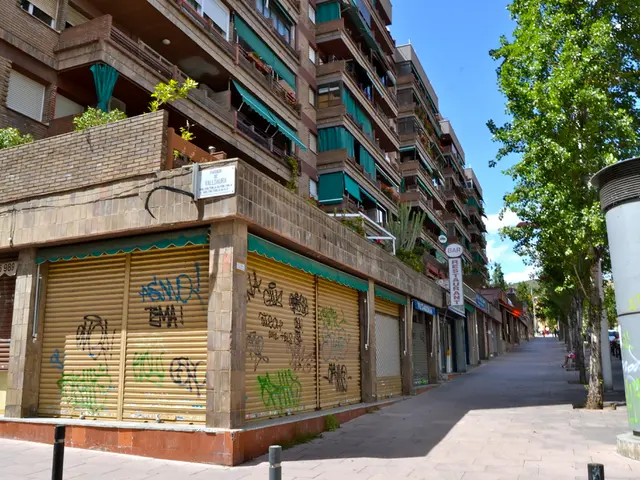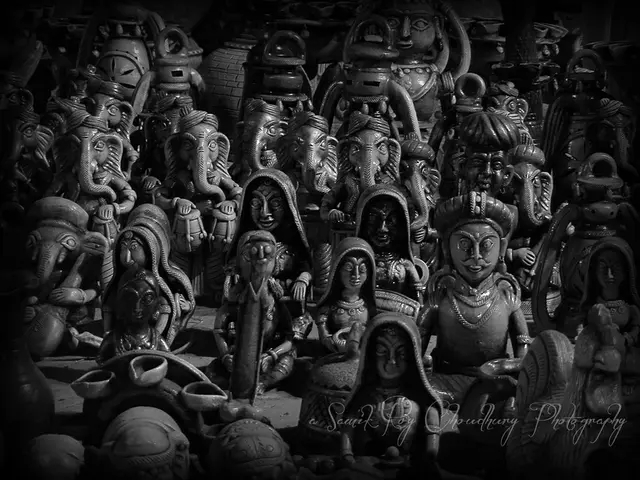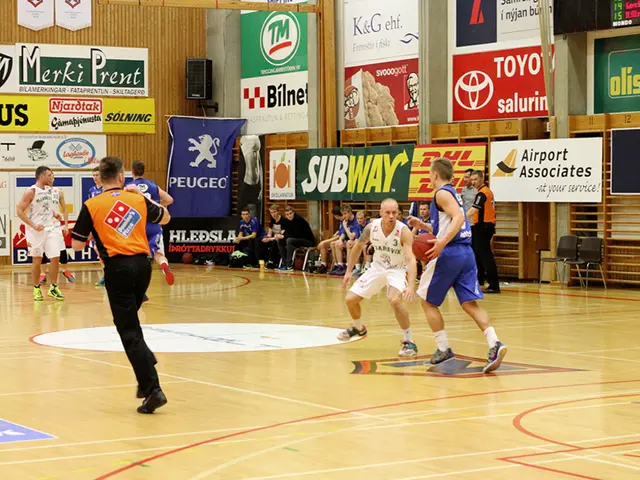'The Bear's latest season showcases the renowned Chicago homes designed by Frank Lloyd Wright, the iconic architect.
In the captivating world of The Bear, season four, episode five, titled "Replicants," the character Carmy Berzatto pays a visit to a significant architectural landmark - the Frank Lloyd Wright Home and Studio in Oak Park, Chicago. This iconic location, nestled at 951 Chicago Avenue, has been a popular tourist destination for years, being one of the most visited historic homes in the city [1].
The Frank Lloyd Wright Home and Studio is more than just a historic site; it is a testament to the birth of the Prairie School movement and the career of one of America's most influential architects. Wright's career was essentially born in Chicago, and his home and studio in Oak Park serve as a tangible reminder of his groundbreaking architectural vision [2][3].
The episode, filmed in a single morning with a small crew, showcases the architectural beauty of the Home and Studio, balancing cinematic splendour with a palpable respect for Wright's legacy. The production team's care for the property was noted by Christine Trevino, the digital communications manager for the Frank Lloyd Wright Trust [4].
Wright's Home and Studio in Oak Park has a rich history. In 1889, he purchased the land and built his first home and studio, which served as a living experiment in domestic architecture, with open central spaces that encouraged family interaction [5]. In 1895, he added a dining room and a barrel-vaulted playroom. In 1898, he further expanded the property by adding a studio, anchored by a soaring octagonal drafting room [6].
The episode also features two of Wright's landmark houses. The Nathan G. Moore House, originally built in 1895, is a Tudor Revival residence with a steep roof and half-timbered upper stories. In 1923, Wright undertook a daring redesign of the house, fusing Gothic and Mayan elements into one of his most unconventional works [7]. The Heurtley House, completed in 1902, is a pure early Prairie Style gem with a hipped roof and deep overhangs [8].
While the exact connection between the Frank Lloyd Wright Home and Studio and The Bear remains speculative, the episode's impact in showcasing how one man and his vision could shape a community was noted by Christine Trevino [9]. The episode serves as a testament to the enduring influence of Frank Lloyd Wright's architectural vision and its relevance in contemporary narratives.
References:
[1] Frank Lloyd Wright Trust. (n.d.). Visitor Information. Retrieved from https://www.franklloydwright.org/visit/
[2] National Trust for Historic Preservation. (n.d.). Frank Lloyd Wright Home and Studio. Retrieved from https://savingplaces.org/places/frank-lloyd-wright-home-and-studio
[3] Chicago Architecture Center. (n.d.). Frank Lloyd Wright Home and Studio. Retrieved from https://www.architecture.org/discover/places/frank-lloyd-wright-home-and-studio
[4] Chicago Tribune. (2022, April 26). 'The Bear' shoots at Frank Lloyd Wright Home and Studio. Retrieved from https://www.chicagotribune.com/entertainment/tv/ct-ent-bear-frank-lloyd-wright-home-and-studio-20220426-7xg36nj75nch65f7tjn4v6f3qr-story.html
[5] Frank Lloyd Wright Trust. (n.d.). History & Timeline. Retrieved from https://www.franklloydwright.org/about/history-timeline/
[6] Wright, F. L. (1988). An Autobiography. New York: W.W. Norton & Company.
[7] National Park Service. (n.d.). Nathan G. Moore House. Retrieved from https://www.nps.gov/frwi/learn/historyculture/nathan-g-moore-house.htm
[8] Frank Lloyd Wright Trust. (n.d.). Heurtley House. Retrieved from https://www.franklloydwright.org/discover/places/heurtley-house/
[9] Chicago Tribune. (2022, April 26). 'The Bear' shoots at Frank Lloyd Wright Home and Studio. Retrieved from https://www.chicagotribune.com/entertainment/tv/ct-ent-bear-frank-lloyd-wright-home-and-studio-20220426-7xg36nj75nch65f7tjn4v6f3qr-story.html







